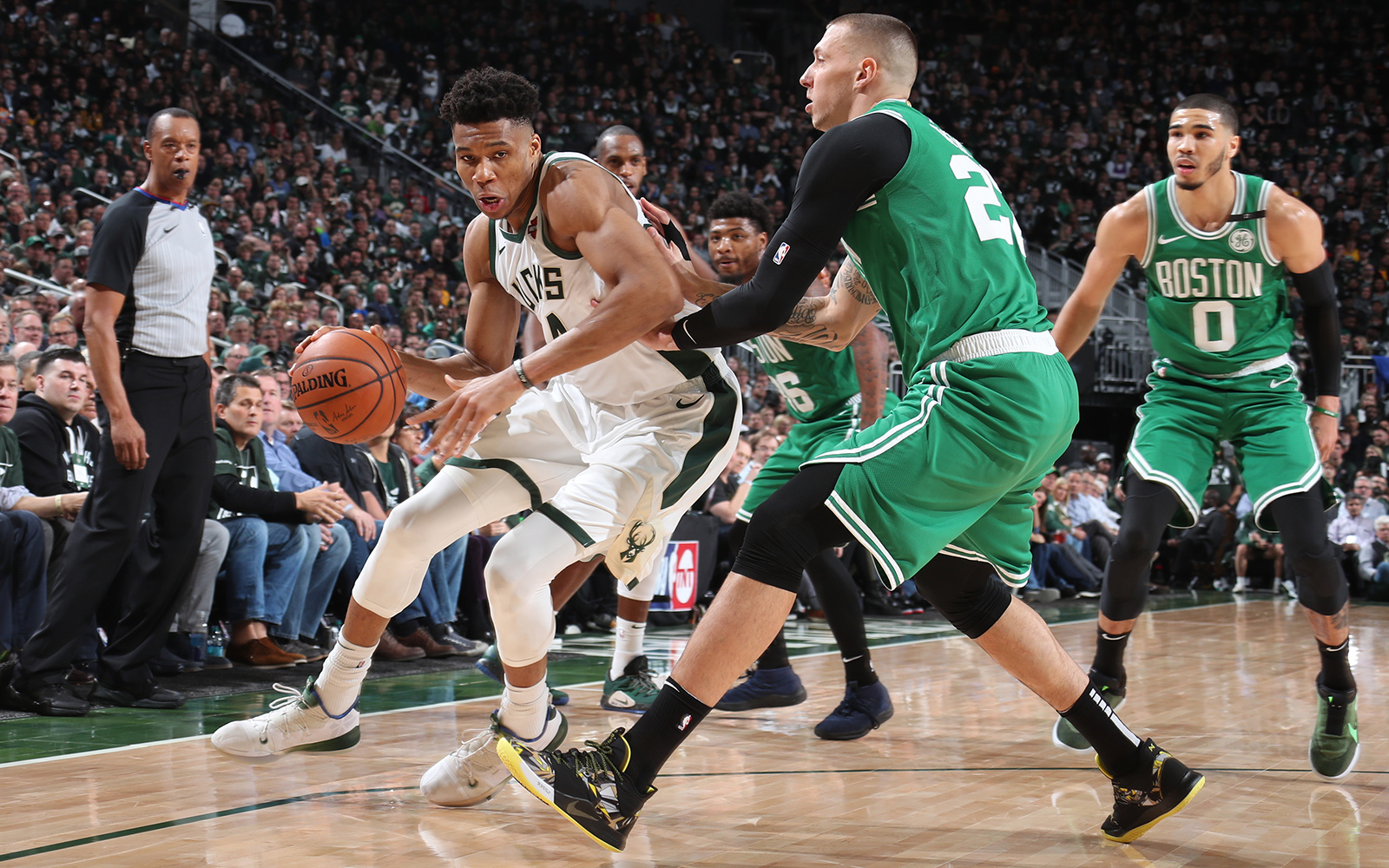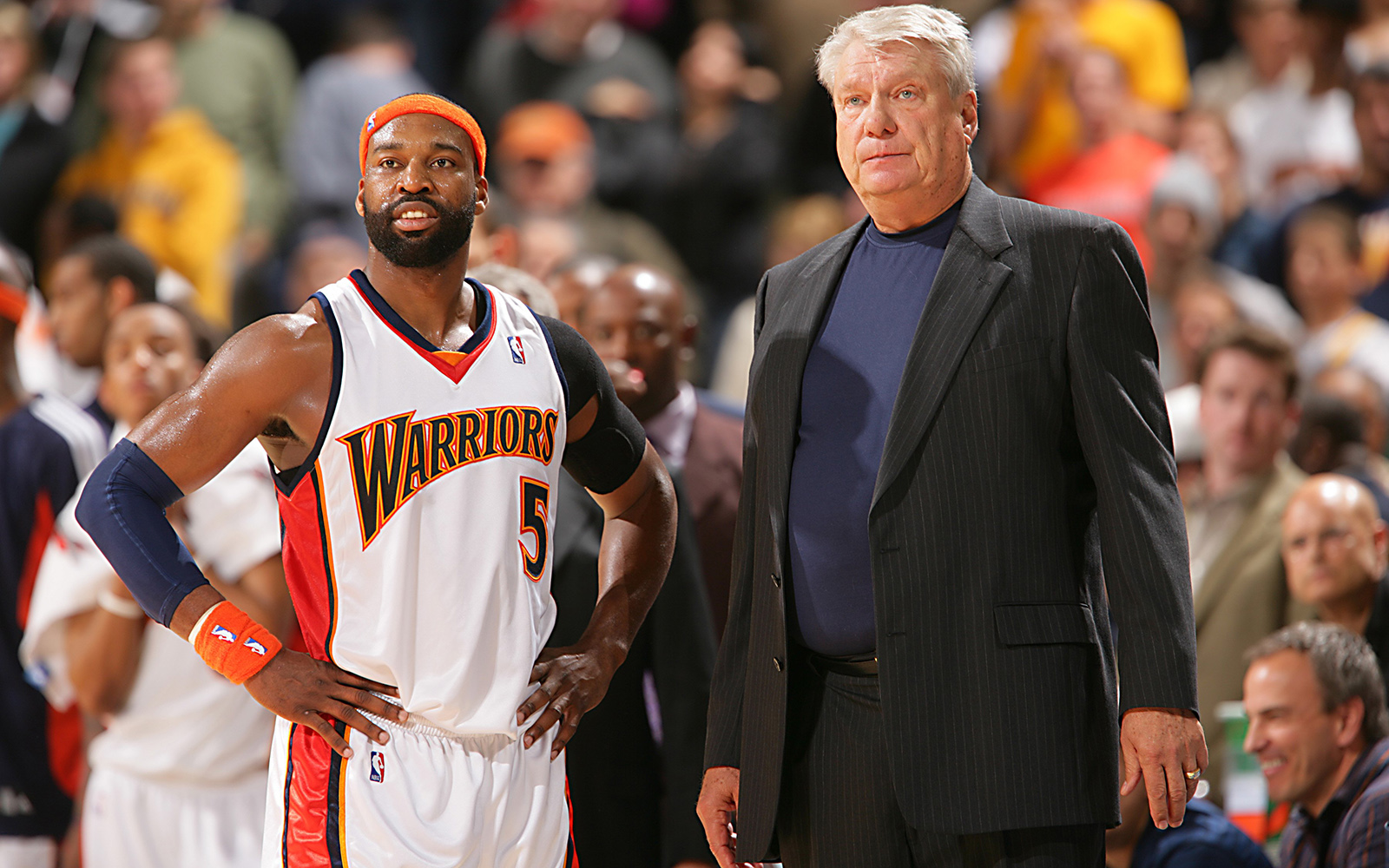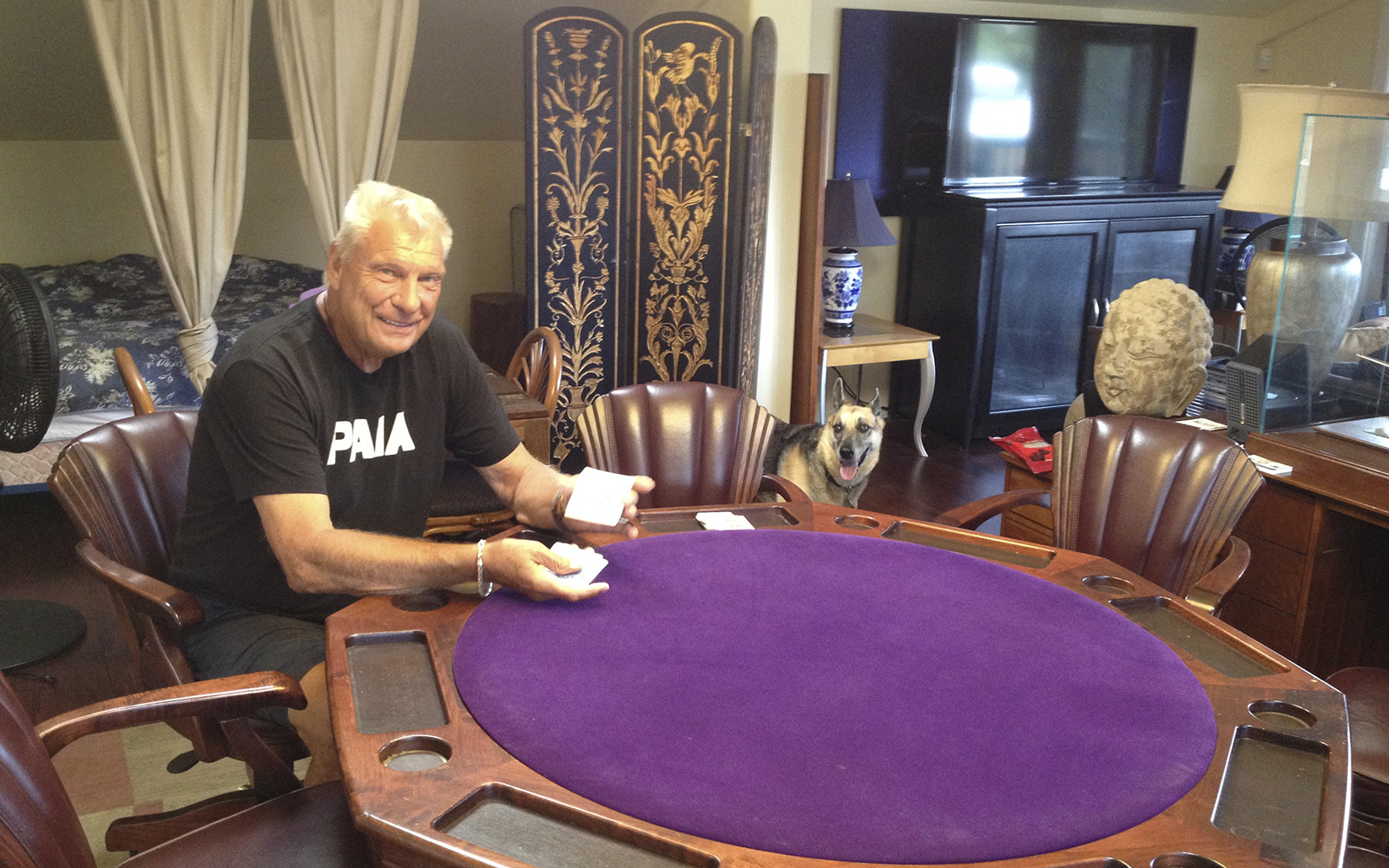Nellie Ball: Don Nelson's Fingerprints Are All Over the 2019 NBA Playoffs

Four decades ago, an NBA head coach dreamed up an idea he thought would give his team an edge: the bank pass. He envisioned his guards drawing in the defense and then firing the ball off the glass to a waiting big man. It would be brilliant. So the team dutifully practiced the move in training camp. Only they kept screwing up the angle, or the force, or the timing. Often, they couldn’t even hit the backboard. Finally, the coach gave up.
It was one among many experiments. Exploiting the era’s illegal defense rules, he instructed two non-scorers to link arms near half-court, marooning the help defense on isolation plays. He gave his 7’7" center the green light to shoot threes. He double-teamed not just big men but guards. Facing Shaquille O’Neal and lacking an effective counterweight—did one exist?—he became the first to direct his players to foul Shaq off the ball and make him hit free throws (“Coward!” O’Neal responded). But the coach’s signature became a series of run-and-gun, center-less lineups—relying on his best five players, regardless of size—and a fondness for oversized playmakers. The latter dated back to his first job, with the Milwaukee Bucks, where he entrusted forward Paul Pressey to handle the ball. Wrote William Barnard of the AP in February of 1985: “[the coach] and Pressey added a new term to the NBA lexicon: point forward.” The story went on to note that, on Jan 3, Pressey had a “triple double”, placing the term in quotation marks.
The coach, as you’ve perhaps deduced, was Don Nelson. To this day, his name elicits varied reactions, making it challenging to assess his work in a vacuum. Though he retired as the league’s all-time winningest coach, Nellie’s reputation never kept pace with his win total. He won three Coach of the Year Awards but never a ring (though he won five as a forward with the Celtics). Rarely does he arise during conversations about the historic greats; he didn’t gain entry to the Hall of Fame until two years after retiring.
And yet, watching these NBA playoffs, I keep seeing echoes of Nellie. In Denver, where we saw the Nuggets run their offense through a towering point-center. In Milwaukee, where a 6’11 playmaker and a three-launching seven-footer anchor the Bucks’ “positionless motion” offense. His legacy lives on in Golden State, of course, but we've also seen traces in Toronto, Houston and Boston. Recently, when I asked Bucks coach Mike Budenholzer about one of his more creative lineups he responded: “I channeled my inner Nellie.”
Bud’s not alone. In many respects the modern NBA now resembles a world predicted by Nelson, full of point-giants and pace-and-space tactics. It’s almost as if he’s become the Philip K. Dick of basketball minds, his concepts endlessly exhumed and adapted.
Perhaps it’s time for a re-assessment.

In 1962, a Cal professor named Thomas Kuhn published a landmark book called “The Structure of Scientific Revolutions”. Kuhn argued that whereas science usually progressed incrementally, building on accepted knowledge, it took intellectual “anomalies”, often diverging wildly, to alter its core assumptions, the way Einstein questioned Newton’s physics. These anomalies could change the existing paradigm (the book led to the widespread use of the phrase “paradigm shift.”)
To Kuhn, Nelson would represent one of those intellectual anomalies, and an incredibly persistent one. During his 31 seasons on the sideline, Nellie repeatedly questioned basic basketball assumptions. To win you need a big man on the block. Centers should stay in the paint. Players need to fit rigid positions. As Nelson once explained to the San Francisco Chronicle: "I had spent my whole life asking: 'Why are point guards expected to only pass, why are small forwards expected to only score and why are centers expected to only post up?'”
For his efforts, Nelson was alternately celebrated and derided. “Mad scientist” is both a pejorative and a compliment, after all. When Nellie gave Manute Bol the green light to shoot threes in 1988, Bol proceeded to jack up nearly 100 of them; no small feat considering entire teams took less than 250 a season back then. Granted, Bol only made 20, but he appreciated the concept, even if others didn’t. “Some friends told me that when we play the Lakers, the announcer for L.A. said, 'Doesn't Nellie know he shouldn't shoot that? He has no business shooting from out there,'” Bol told the LA Times in 1989. "But (Nelson) said, 'If you think it's a good shot, take it.'"
When Nelson became obsessed with Dirk Nowitzki, touting the tall, skinny German as a lock for Rookie of the Year in Dallas 1998 and giving him a similar green light from deep, the coach was mocked (it didn’t help that Nowitzki shot 20% on threes that first year). That bet paid off, of course; Nowitzki eventually helped change the game and inspired a generation of towering marksmen.
Nellie’s small-ball iterations fared better in the public eye, none more beloved—or better-named—than the Run TMC Warriors of the early 90s, which featured the namesake trio of Mullin, Hardaway, and Mitch Richmond alongside Sarunas Marciulionis and Rod Higgins, none taller than 6’7. Fifteen years later, Nellie reincarnated the lineup, again in Golden State, only this time with Baron Davis, Matt Barnes, Monta Ellis, Jason Richardson, Stephen Jackson, and Al Harrington (the tallest at 6’9). A 2007 New York Times story, written by a young sportswriter named Lee Jenkins, described it:
"While other teams may be spending their practice time working on intricate plays, the Warriors are working on their spacing. They spread the floor as much as any team in the N.B.A., taking advantage of their speed.
"By spreading the floor, Golden State forces the defense to cover the perimeter, allowing Davis to drive into the paint. The defense can try to collapse to stop Davis, but then he can kick the ball out for an open 3-pointer."
The passage could be lifted out of the current pace-and-space, Sprawlball era, when teams like the Bucks tape five “stand here” boxes around the perimeter of their practice court.

Plenty of Nellie’s ideas feel familiar now. The Warriors-Rockets series was a battle of the smalls, with Houston often using PJ Tucker as their center in a micro-lineup of players measuring 6’6" and smaller. In Milwaukee, Brook Lopez is essentially a far more effective version of Manute (at least offensively), sinking to protect the rim on defense and bombing away on offense, shattering the record for three-point takes and makes by a center this season. Before succumbing, Boston countered Lopez with their own stretch big, Al Horford. And, with Kevin Durant out, the Warriors must now rely even more upon Steph Curry, a man originally drafted by a besotted Nellie.
Perhaps foremost among Nelson’s realized dreams is the “positionless” basketball trend, exemplified best by teams like the Bucks. Indeed, so dramatically has the game evolved that the concept of positions is increasingly irrelevant. Ben Falk, a former Sixers assistant GM who now runs Cleaning the Glass, originally developed an automated program for his site to assign players one of five slots—point, combo [guard], wing, forward, or big—based on who surrounds them in lineups. In prior years, the system deemed Giannis Antetokounmpo a forward. This season, even though Giannis has been the primary ballhandler, the program classified him as a "big" much of the time. “I haven’t figured out what to do,” says Falk, who cites Ben Simmons as another problematic player. “In the past we’ve called them point forwards but really, they’re all basketball players and you’re trying to slot them into the roles they do best.”
Of course, Nellie wasn’t the only one dreaming of interchangeable players, and he freely admits to borrowing and adapting from others himself. It’s also important to note that this isn’t a cause-and-effect situation. Myriad coaches, from George Karl to Mike D’Antoni and on down the line, contributed to the game’s evolution, as did trends like globalization, analytics, and a succession of singular players like LeBron, the ultimate point-forward. Rather, what sets Nelson apart is the sheer number of things he tried, and how many of them now seem prescient. In some respects, he’s like the songwriter whose creations are invariably covered better, and with greater success, by others. He gave us the We Believe Warriors, who won one (very entertaining) playoff series. Steve Kerr gave us the Dynasty Warriors, upgraded at most every small-ball position, with Draymond Green in the Harrington role.
Innovators often take a public beating, depending on how elegant their innovations appear. Sam Hinkie got killed; then the league freaked out, teams copied him, and now the Sixers are a force. D’Antoni was hailed when he concocted the “Seven Seconds or Less” offense because it was glorious to watch. Now he’s bemoaned for his Harden-centric system, as it can render the most graceful of sports closer to drudgery. Still, D’Antoni is merely exploiting his team’s strengths while minimizing its weaknesses.
That’s what Nelson says he was always doing. Making the best of the situation, even if it occasionally seemed he purposefully created the weaknesses (Just look at the big men the Warriors drafted over the years). Still, necessity—or at least the appearance of it—is the mother of invention.
Fans may not always remember all Nellie did, but coaches don’t forget. When the Chronicle wrote about Nellie in 2010, near the end, Pat Riley called him, “the greatest innovator in the history of the game.” Added Larry Brown: "Forever, people in this league will be doing what Nellie did first, and it will never get old."
Ideas might not age but coaches do.
Most choose to do so differently than Nellie, however. They take an announcing gig. Or sign on as a well-compensated “special consultant”. Maybe run a clinic or, at worst, get a car dealership.
Nellie? After leaving the Warriors in 2010, he headed back to his home in Maui and fell off the basketball map. In 2013, I visited him at his home in Paia. He greeted me in flip flops, looking trim and tan, and led the way to the patio to smoke stogies—he’d cut out beer—and watch the waves, his two dogs lounging nearby. Later, once he figured out the DVR, we watched a Warriors-Grizzlies game. He cackled a lot, praised Andrew Bogut, and cursed David Lee.
He took life at its own pace. Long afternoons. Shuffleboard out back of the bistro he owned. And, best of all, poker games in his upstairs man cave. There, he and his buddies—including Woody Harrelson, Owen Wilson, and Willie Nelson—would get magnificently stoned and play deep into the night. Once, he told me, a beloved regular, Greg Booth, passed away right there during the game, his aorta giving out. The coroner was late arriving, and the group looked to Nellie, who said, “"He'd want you to play on." So they’d finished the game that night, stepping around Booth’s body to get to the veranda for a smoke. "Poor bastard," Nellie told me, "but he went out doing what he loved."

One gets the impression that’s how Nellie intends to go, too. In his case, however, it would be something other than hoops. “I have no interest in returning,” he told me then.
He kept his word. The next the world saw of him he was inducting Steve Nash into the Hall of Fame in 2018. Then, this spring, he returned to Oracle to fete the We Believe Warriors. He wore a black t-shirt under a black blazer, accented by gold chain, silver beard and matching shoulder-length silver locks. He smiled and joked and espoused the virtues of the marijuana strain he now grows, “Nellie Kush.” Life, he told us, was good.
Nellie turns 79 on Wednesday, and his retirement to date has mirrored his coaching career, marked by one animating question: Why Not? Why not go live in Maui and breathe the salt air? Why not put Dirk on Muggsy and, later, Stephen Jackson on Dirk? Why not bring a Bud Light to the postgame presser? Why not try things just to see what happens?
This was always his strength: a willingness to put back-of-the-napkin flights of fancy into motion, consequences be damned. He encouraged others to do the same. When young coaches or assistants asked him for advice, Nellie would say the same thing every time: 'You can't be somebody else, you gotta be yourself."
Nelson lived that credo, and the game is better for it. He may not have directly caused the game to evolve—though he no doubt had a hand in it—but he gave us a glimpse of what was to come. Thirty years ago, had you wanted to look into a crystal ball and see the future of basketball, you could have. It was right there, in Nellie’s playbook.
